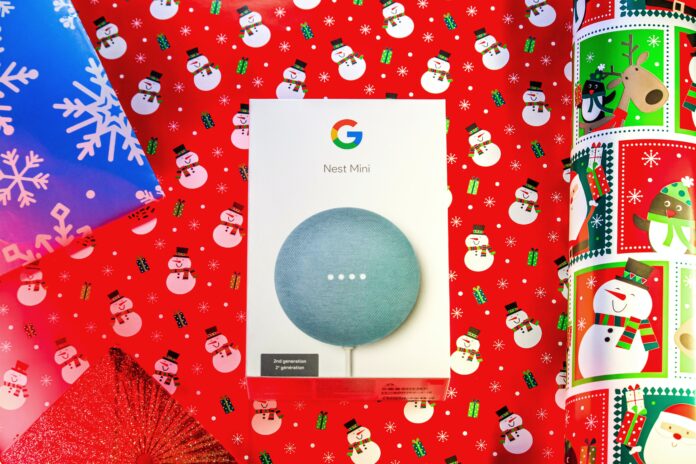Google Nest is a brand of smart home devices developed by Google. Formerly known as Google Home, Google Nest devices are designed to enhance the functionality and convenience of homes by integrating various aspects of daily life with technology. From controlling lights and thermostats to playing music and managing schedules, Google Nest products offer a wide range of features to make homes smarter and more connected. Here is a list of ten important things you need to know about Google Nest:
1. Product Range: Google Nest offers a diverse range of products to cater to different aspects of home automation. Some of the key devices include smart speakers (such as Nest Audio and Nest Mini), displays (like Nest Hub and Nest Hub Max), thermostats (such as Nest Learning Thermostat and Nest Thermostat E), cameras (like Nest Cam Indoor and Nest Cam IQ), doorbells (such as Nest Hello), and Wi-Fi systems (like Nest Wi-Fi).
2. Voice Control: One of the prominent features of Google Nest devices is their integration with Google Assistant, the virtual assistant developed by Google. This enables users to control their Nest devices through voice commands. By saying “Hey Google” followed by a command, users can play music, adjust the thermostat, dim the lights, set timers, ask questions, and perform various other tasks.
3. Smart Home Integration: Google Nest products are designed to seamlessly integrate with other smart home devices and platforms, making it easy for users to create a connected home ecosystem. They support popular smart home protocols like Wi-Fi, Bluetooth, and Zigbee, allowing users to control compatible devices from different manufacturers through a single interface. Additionally, Google Nest devices work well with other Google services and products, such as Chromecast, allowing users to control media playback on their TVs with voice commands.
4. Energy Efficiency: Nest thermostats, like the Nest Learning Thermostat and Nest Thermostat E, are known for their energy-saving capabilities. These devices learn users’ temperature preferences and schedules and automatically adjust the temperature to optimize energy usage. They can also provide energy usage reports and tips to help users reduce their energy consumption.
5. Home Security: Google Nest offers a range of security-focused devices to enhance home safety. Nest cameras and doorbells provide high-definition video streaming, two-way audio communication, and motion detection capabilities. Users can receive alerts on their smartphones when motion or sound is detected, allowing them to monitor their homes remotely. Additionally, Nest Secure is a home security system that includes a hub, keypad, and various sensors to detect intrusions and provide professional monitoring services.
6. Family and Home Connectivity: With Google Nest devices, users can set up a connected ecosystem that promotes family connectivity and simplifies daily tasks. For instance, users can broadcast messages to all Google Nest speakers in their home, making it easy to communicate with family members in different rooms. Users can also create routines, which are sets of automated actions triggered by a specific command or event. Routines can be used to control multiple devices simultaneously, adjust settings, and perform tasks like turning off lights and playing music when leaving the house.
7. Media and Entertainment: Google Nest devices provide various features for media and entertainment purposes. Users can stream music from popular services like Spotify, YouTube Music, and Pandora, controlling playback with voice commands. Google Nest Hub devices have screens that can display videos, photos, and visual information, making them suitable for watching YouTube videos, video calls, and displaying personalized content.
8. Data Privacy and Security: Google Nest places a strong emphasis on data privacy and security. They incorporate encryption, secure authentication, and regular software updates to protect user data. Google Nest devices only process and store data necessary to provide their functionalities and offer transparency regarding the data collected. Users have control over their data and can manage their privacy settings through the Google Home app or web portal.
9. App and Device Management: The Google Home app is the central hub for managing Google Nest devices. Users can set up and configure devices, manage device settings, create routines, view security camera footage, and access various features and settings from the app. Additionally, users can control their Nest devices through voice commands using compatible devices like smartphones, tablets, smart displays, and smart speakers.
10. Third-Party Integration and Developer Platform: Google Nest provides a developer platform and API, allowing third-party developers to integrate their apps and services with Nest devices. This opens up possibilities for creating custom integrations, automations, and extending the functionality of Google Nest devices. For example, users can integrate their smart locks, lighting systems, and other devices with Google Nest to create customized home automation routines.
The wide range of Google Nest products cater to different needs and preferences. Smart speakers like Nest Audio and Nest Mini offer high-quality audio and voice control capabilities, allowing users to play music, podcasts, or audiobooks with a simple voice command. The Nest Hub and Nest Hub Max, with their built-in displays, provide visual information and can be used for video calls, watching videos, and displaying photos or recipes.
Nest thermostats, such as the Nest Learning Thermostat and Nest Thermostat E, are known for their energy efficiency features. By learning users’ temperature preferences and schedules, these thermostats can automatically adjust the temperature to save energy when users are away and maintain comfort when they are at home. Energy reports and tips provide users with insights into their energy usage patterns and help them make informed decisions to reduce their environmental footprint.
Google Nest devices also contribute to home security. Nest cameras, including the Nest Cam Indoor and Nest Cam IQ, offer high-definition video streaming, two-way audio, and motion detection. Users can receive alerts on their smartphones when motion or sound is detected, allowing them to monitor their homes remotely and act promptly if necessary. The Nest Hello video doorbell provides similar features, allowing users to see and communicate with visitors at their front door from anywhere.
Creating a connected home ecosystem is made easy with Google Nest’s compatibility with popular smart home protocols. Whether it’s controlling smart lights, locks, or switches, or integrating with platforms like Philips Hue, Samsung SmartThings, or Belkin Wemo, Google Nest devices offer seamless integration and control through the Google Home app. This allows users to manage their entire smart home from a single interface, providing convenience and ease of use.
In addition to its consumer-facing features, Google Nest offers a developer platform and API, enabling third-party developers to create integrations and customize the functionality of Google Nest devices. This opens up possibilities for creating unique automations and extending the capabilities of Google Nest devices based on individual needs and preferences.
Data privacy and security are paramount for Google Nest. With robust encryption, secure authentication, and regular software updates, Google Nest devices aim to protect user data and provide a secure smart home experience. Users have control over their data and can manage privacy settings through the Google Home app or web portal, ensuring transparency and giving users the ability to customize their privacy preferences.
The Google Home app serves as the central hub for managing Google Nest devices. It offers a user-friendly interface for setting up and configuring devices, adjusting settings, creating routines, and accessing various features. Additionally, users can control their Google Nest devices through voice commands using compatible devices such as smartphones, tablets, smart displays, and smart speakers, making it convenient to interact with their smart home from anywhere within their home.
Overall, Google Nest is a comprehensive ecosystem of smart home devices that brings convenience, automation, and connectivity to homes. With its voice control capabilities, smart home integration, energy efficiency features, home security solutions, and emphasis on data privacy and security, Google Nest is at the forefront of the smart home industry, providing users with a seamless and connected living experience.














